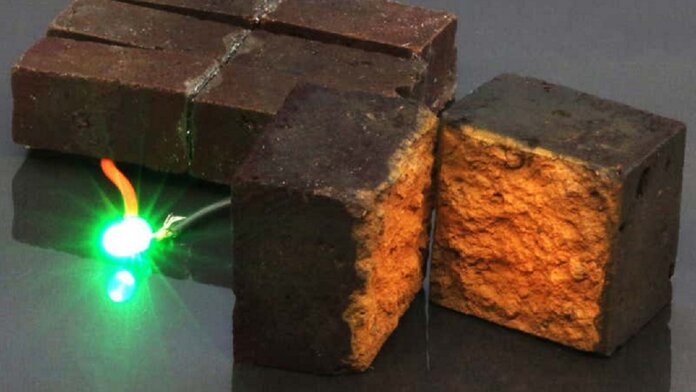One of the biggest barriers to the renewable energy revolution is working out how to store power when the sun doesn’t shine and the wind doesn’t blow. Now scientists have shown standard construction bricks can be converted into energy storage units, potentially turning our houses into giant batteries.
While lithium ion battery technology has seen dramatic price drops in recent years, most experts agree that they will remain too expensive for grid-scale storage. The relative scarcity of lithium also means they’re unlikely to be able to meet all our energy needs.
That’s driven considerable research into alternative ways of storing excess renewable energy, from much cheaper molten salt batteries to approaches that use spare electricity to compress air or pump water uphill before later releasing them to drive turbines.
But it seems a potential energy storage medium has been sitting under our noses all this time. In a paper in Nature Communications, researchers from Washington University in St. Louis have demonstrated that bricks bought from Home Depot can be treated with a simple chemical procedure to give them battery-like power storing capabilities.
The technique takes advantage of the brick’s porous structure to deposit a layer of a conducting polymer called PEDOT throughout the brick. This converts each brick into a supercapacitor, which is similar to a battery but typically trades faster charging times for lower storage capacity.
The researchers’ process involves first bathing the bricks in a hydrochloric acid vapor, which seeps into the pores and reacts with the iron oxide that gives the bricks their red color. This turns the iron oxide into a reactive form of iron, which then interacts with another gas that is flooded through the brick to create a thin film of PEDOT, an electrically conductive plastic.
This coating is actually a mat of nanofibers with a very large surface area, which increases its energy storage capacity. This PEDOT coating acts as an electrode, and the researchers also added a gel electrolyte to the bricks.
They showed that three small bricks were enough to power a green LED for ten minutes on a single charge. What’s more, a waterproof epoxy the researchers coated the bricks with had a knock-on effect of preventing water evaporation from the gel, which means the bricks can be charged and discharged for 10,000 cycles with only a 10 percent reduction in capacity.
The bricks are still a proof of concept rather than a ready-to-go solution to our energy storage needs; their energy density is just one percent that of lithium ion batteries. In a press release Julio D’Arcy, who led the study, said 50 bricks hooked up to a solar panel could provide emergency lighting for 5 hours. That’s a long way from storing enough power for our increasingly energy-hungry households.
D’Arcy also conceded to New Scientist that there is some concern that the acid treatment might affect the integrity of the bricks, to the extent that they might not be able to make up the main structural components of a building.
But it’s still early, and the team sees routes to significant improvements in performance. D’Arcy notes that the team is already working on ways to turn their nanofibers into composite materials containing other semiconductors, which they hope will boost capacity by a factor of ten. They’re also working on tweaks to the manufacturing process to boost speeds and bring down costs.
They’re not the only ones trying to boost the functionality of the humble brick. D’Arcy notes that one group has combined bricks with metal oxide nanoparticles to help filter pollution out of the air, and another has created bricks that can conduct electricity by incorporating electrodes made from carbon nanomaterials. Electric carmaker Tesla is also building solar power-generating roof tiles.
While there’s still a long way to go, it seems the houses of the future might be giant batteries that can charge themselves using abundant renewable energy.
Image Credit: D’Arcy Laboratory



